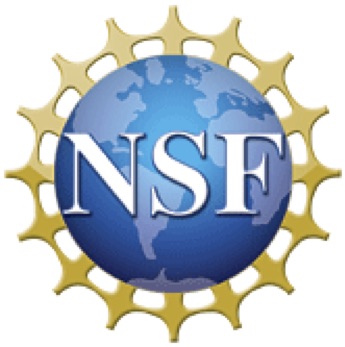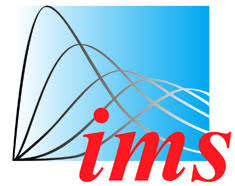Tutorial Lectures:
|
University of California, Los Angeles March 13, 2019 1:30 - 3:00 PM and 3:30 - 5:00 PM |
Title: Exceptional points of two-dimensional Discrete Gaussian Free Field and Random-Walk Local Time
Abstract: The tutorial will focus on the scaling limit of sets of exceptional points for two closely-related two-dimensional processes --- namely, the Discrete Gaussian Free Field (DGFF) and Random Walk Local Time (RWLT). For the DGFF, this concerns the so called thick points, which are those where the field is at the height corresponding to a given positive multiple of its absolute maximum. For the RWLT, besides similarly-defined thick points, this also includes the corresponding sets of thin points, where the local time is at only a fraction of its typical value, and the avoided points, which are those not yet visited by the random walk. As it turns out, for random walks run for times corresponding to a positive multiple of the cover time of the underlying domain, the scaling limit of these RWLT sets is, modulo normalization factors, identical to those of the thick points of the DGFF. This is perhaps the first demonstration of universality of the Gaussian Free Field in these extremal problems. The lectures will not assume prior knowledge of these topics and will focus on ideas while leaving difficult calculations to a reference material. The results are drawn from joint papers with Oren Louidor and Yoshihiro Abe.
|
Invited Plenary Speakers
|
Jean Bertoin (Kai Lai Chung Lecturer) Universität Zürich March 14, 9:30 - 10:30 AM |
Title: Probabilistic views on growth-fragmentation equations
Abstract: The growth-fragmentation equation describes a system of growing and dividing particles that arises in some models in population dynamics. Several important questions about the equation concern the asymptotic behavior of solutions at large times: at what rate do they grow, and what does the asymptotic profiles of solutions look like? Does the rescaled solution converge to its asymptotic profile at an exponential speed? These questions have traditionally been studied using analytic techniques such as entropy methods and spectral theory of operators. In this talk, we present a probabilistic approach via a Feynman–Kac formula that enables us to express the solution of the growth-fragmentation equation in terms of a certain Markov process. The asymptotic behavior of solutions of growth-fragmentation equations can then be determined in terms of that Markov process. We shall also study particle systems with growth-fragmentation dynamics, and again determine their asymptotic behaviors in terms of the latter. Partly based on joint works with Alex Watson, Manchester University.
|
|
Imperial College London March 15, 9:30 - 10:30 AM |
Abstract:I will present local well-posedness in regular spaces and a Beale-Kato-Majda blow-up criterion for a stochastic model for incompressible flows. This model describes fluid motions whose Lagrangian particle paths follow a stochastic process with cylindrical noise. The talk is based on recent work joint with Franco Flandoli (Pisa) and Darryl Holm (Imperial).
|
|
University of Illinois, Urbana-Champaign March 16, 9:30 - 10:30 AM
|
Abstract: Mathematicians have been working on Bose-Einstein condensation, making rigorous connections between the physics of the microscopic many-body dynamics and the mathematics of the macroscopic model, the cubic nonlinear Schroedinger equation. I'll discuss recent progress on understanding fluctuations in quantum systems, and a quantum central limit theorem. This is joint work with Gerard Ben Arous, Benjamin Schlein, and Gigliola Staffilani. Time permitting, I will also talk about some recent work defining biological machines that out-perform Turing machines.
|
|
University of Arizona March 16, 11:00 AM - 12:00PM |
Abstract: We consider zero-range + Glauber interacting particle systems, where the zero-range part moves particles while preserving particle numbers, and the Glauber part allows creation and annihilation of particles. On the one hand, the hydrodynamic limit, when the zero-range part is diffusively scaled but the Glauber part is not scaled, corresponds to an non-linear Allen-Cahn reaction-diffusion PDE. On the other hand, in such PDEs, when the reaction term is now magnified, have solutions which take on stable values across an interface moving by a mean-curvature flow. In this talk, we discuss a derivation of this mean-curvature flow directly from the particle systems where the zero-range and Glauber parts are simultaneously seen in certain time-scales.
|
|
École Polytechnique March 15, 2:00 - 3:00 PM |
Abstract: The spatial structure of a population influences the way genes are transmitted from one generation to the next, and consequently how the genetic diversity in the population evolves through time. To model this evolution when the population lives in continuous space (a forest, a mountain range, ...), a stochastic process called the spatial Lambda-Fleming-Viot process was introduced in 2008 by Alison Etheridge (Oxford Univ.) and Nick Barton (IST Austria). We shall first present a some of the results obtained thanks to this approach, and related questions that are still open. |

